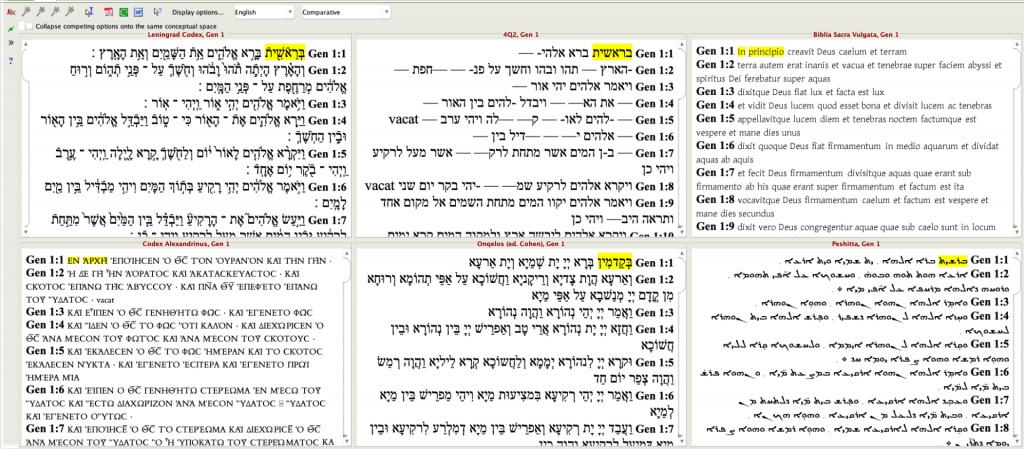Critical Editions for Digital Analysis and Research (CEDAR), Bible project
Jeffrey Stackert Professor of Hebrew Bible, University of Chicago Divinity School; also in the College and the Greenberg Center for Jewish Studies; Associate Faculty in the Department of Classics and the Department of Near Eastern Languages and Civilizations
Simeon Chavel Associate Professor of Hebrew Bible, University of Chicago Divinity School; Associate Faculty in the Department of Near Eastern Languages and Civilizations and in the Center for Middle Eastern Studies; also in the College
Ron Hendel Norma and Sam Dabby Professor of Hebrew Bible and Jewish Studies, University of California, Berkeley
Sarah Yardney Postdoctoral research specialist, University of Chicago Divinity School
Joseph Cross*, Doren Snoek*, Bradley Hansen Doctoral students, University of Chicago Divinity School (*past participants)
Supported in part by funding from the Neubauer Collegium for Culture and Society and by the E. Rhodes and Leona B. Carpenter Foundation.
The CEDAR Bible Project is an exciting innovation in biblical scholarship. It will link manuscripts and critical editions of biblical books with photographs and commentary, creating a virtual polyglot for biblical research. It will transform scholarship by combining these tools and resources into new media.
Despite the great expansion of our textual data since the earliest works of biblical text-criticism, there have been almost no conceptual advances in the tools available for studying that data. Word processors have made publishing easier, and digital imaging techniques can produce clearer and more detailed photographs, but for the most part scholars are still working with flat, static text and flat, static images. The tools offered by CEDAR, made possible by a new approach to encoding texts in the OCHRE database, thus represent a significant development in the history of textual criticism.
CEDAR-Bible offers scholars the ability to compare biblical manuscripts (and critical editions, if desired) both within and across language traditions. This is key because much of our best text-critical evidence for the Bible comes from early translations. Within a language tradition, a tool called Critical View allows the scholar to stack manuscripts and/or critical editions on top of each other, so to speak, with differences between them signaled to the user visually. Color coding indicates relationships between the texts: green for agreement, red for disagreement, black for text attested only in one of the versions. Pop-up windows provide details.

Ron Hendel’s critical edition of Genesis compared with the Leningrad Codex, the earliest complete manuscript of the Hebrew Bible (Old Testament).
To compare manuscripts across language traditions, scholars can use a tool called Comparative View which arranges manuscripts side by side in panels with highlighting to indicate alignment: that is, words or phrases that occupy the same conceptual space in their respective texts, without any judgement regarding their agreement. Future tools will make it possible to identify lexical and morphological differences across languages.

Six manuscripts and editions—two in Hebrew, one in Latin, one in Greek, one in Aramaic, and one in Syriac—of the first chapter of Genesis. The yellow highlighting indicates the alignment between the opening word/s in the six texts.
Publications
Sarah Yardney, Sandra R. Schloen, and Miller Prosser. “New Digital Tools for a New Critical Edition of the Hebrew Bible.” Open Theology 5, no. 1 (July 2019), 80–94. https://doi.org/10.1515/opth-2019-0006.
Sarah Yardney, Miller Prosser, and Sandra R. Schloen. “Digital Tools for Paleography in the OCHRE Database Platform.” TC: A Journal of Biblical Textual Criticism 25 (2020): 129–43. http://jbtc.org/v25/TC-2020-Yardney-Prosser-Schloen.pdf.
